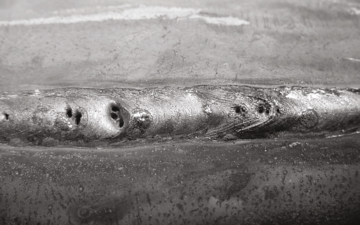Porosity in Welding: Identifying Common Issues and Implementing Best Practices for Prevention
Porosity in welding is a prevalent problem that typically goes undetected until it causes significant problems with the integrity of welds. This usual flaw can endanger the strength and toughness of welded frameworks, posturing security threats and bring about pricey rework. By comprehending the source of porosity and carrying out reliable avoidance techniques, welders can significantly improve the quality and integrity of their welds. In this discussion, we will check out the crucial factors adding to porosity development, examine its harmful impacts on weld efficiency, and discuss the very best techniques that can be adopted to lessen porosity event in welding processes.
Typical Causes of Porosity

Using dirty or wet filler materials can present pollutants right into the weld, contributing to porosity problems. To reduce these typical causes of porosity, detailed cleaning of base metals, correct protecting gas option, and adherence to ideal welding criteria are essential techniques in accomplishing high-quality, porosity-free welds.
Impact of Porosity on Weld High Quality

The presence of porosity in welding can considerably compromise the architectural stability and mechanical residential properties of welded joints. Porosity develops spaces within the weld steel, compromising its overall stamina and load-bearing capacity. These voids act as anxiety focus factors, making the weld more prone to breaking and failure under applied loads. Furthermore, porosity can reduce the weld's resistance to corrosion and other ecological aspects, better diminishing its durability and efficiency.
Among the main consequences of porosity is a reduction in the weld's ductility and toughness. Welds with high porosity levels tend to exhibit lower impact stamina and decreased ability to flaw plastically before fracturing. This can be particularly worrying in applications where the bonded elements undergo dynamic or cyclic loading problems. Porosity can browse this site hinder the weld's ability to efficiently transmit forces, leading to premature weld failure and possible read safety hazards in essential structures. What is Porosity.
Ideal Practices for Porosity Avoidance
To boost the structural stability and quality of bonded joints, what details measures can be carried out to lessen the occurrence of porosity during the welding procedure? Making use of the proper welding technique for the specific material being welded, such as adjusting the welding angle and weapon placement, can additionally avoid porosity. Routine assessment of welds and prompt removal of any kind of problems determined throughout the welding process are necessary methods to protect against porosity and create high-quality welds.
Importance of Proper Welding Techniques
Implementing proper welding techniques is critical in guaranteeing the structural stability and high quality of welded joints, building on the structure of efficient porosity avoidance measures. Welding techniques straight influence the general toughness and durability of the bonded framework. One vital element of proper welding methods is maintaining the correct heat input. Extreme warmth can lead to enhanced porosity because of the entrapment of gases in the weld swimming pool. On the other hand, insufficient warmth might result in insufficient combination, creating potential powerlessness in the joint. Furthermore, utilizing the suitable welding criteria, such as voltage, present, and take a trip speed, is important for accomplishing audio welds with marginal porosity.
Furthermore, the selection of welding process, whether it be MIG, TIG, or stick welding, should straighten with the specific needs of the job to make certain ideal outcomes. Correct cleansing and preparation of the base metal, as well as picking the best filler product, are likewise vital parts of skilled welding methods. By adhering to these ideal methods, welders can minimize the risk of porosity formation and create high-grade, structurally sound welds.

Checking and Top Quality Control Measures
Quality assurance actions play an important function in verifying the honesty and integrity of welded joints. Testing procedures are necessary to find and avoid porosity in welding, making certain the strength and sturdiness of the final item. Non-destructive testing approaches such as ultrasonic testing, radiographic testing, and aesthetic assessment are generally employed to determine potential defects like porosity. These strategies enable for the assessment of weld quality without jeopardizing the stability of the joint. What is Porosity.
Conducting pre-weld and post-weld assessments is also essential in keeping quality assurance requirements. Pre-weld examinations include validating the products, equipment settings, and cleanliness of the workspace to avoid contamination. Post-weld examinations, on the other hand, assess the last weld for any type of defects, consisting of porosity, and confirm that look at this website it fulfills specified criteria. Applying a detailed quality assurance strategy that consists of detailed testing procedures and examinations is extremely important to lowering porosity concerns and making sure the total high quality of bonded joints.
Final Thought
To conclude, porosity in welding can be an usual concern that affects the high quality of welds. By recognizing the usual reasons for porosity and implementing finest methods for avoidance, such as correct welding strategies and screening measures, welders can ensure excellent quality and reputable welds. It is necessary to prioritize avoidance methods to lessen the occurrence of porosity and maintain the honesty of welded structures.
Comments on “Professional Guidance on What is Porosity in Welding and Just How to Address It”